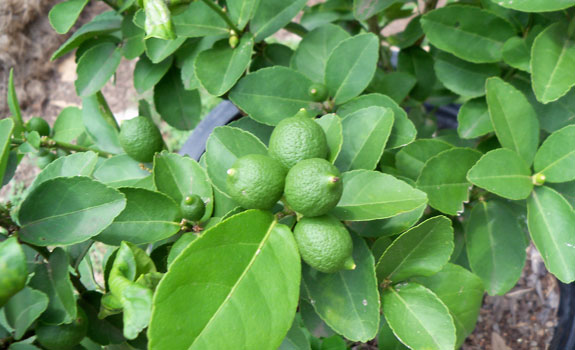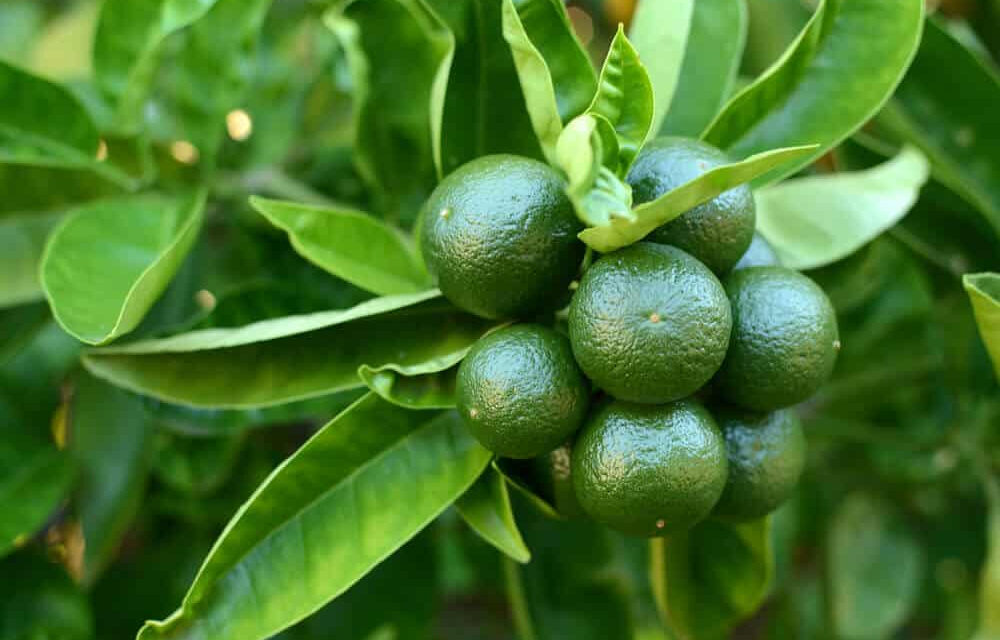Looking to learn how to grow a lime tree from seed? Look no further! We've got an easy, no fuss no muss DIY gardening guide that'll have you growing lime trees in no time! Fresh lime juice is a key ingredient in many delicious cocktails and dishes, so what could be more satisfying than growing your own lime tree? While it may seem like a daunting task, growing a lime tree from seed is actually quite easy—and immensely rewarding. With a little patience and the following instructions, you'll be harvesting limes in no time! Keep reading to learn how to grow a lime tree from seed.

What You'll Need:
- 1 fresh lime
- 1 sharp knife
- 1 toothpick
- 1 small pot with drainage holes
- 1 bag of planting mix or potting soil
- A warm, sunny windowsill or grow light (optional)
- A spray bottle (optional)
- Patience!
How to Grow a Lime Tree From Seed – Step by Step Instructions
First, you'll need to remove the lime seeds from the fruit. Cut the lime in half crosswise, then use the knife to score the flesh of each half in a crisscross pattern. Be careful not to cut too deeply into the rind. Gently pry the segments apart, being careful not to damage the seeds inside. Use the toothpick to remove the seeds from the segments, being careful not to damage them. You should have 10-12 seeds total.
Next, you'll need to prepare your pot. Fill it with planting mix or potting soil, then dampen the potting mix by using a spray bottle. Place your pot in a warm, sunny location—if you don't have one, a grow light will suffice. Now it's time to plant your seeds! Place 3-4 seeds in the center of the pot, then lightly cover them with more planting mix or potting soil. Gently mist the mix with water from the spray bottle until it is evenly moist but not soggy. All that's left to do now is wait!
Keep an eye on your seeds and water as needed to keep the mix evenly moist but not soggy. In about 2 weeks, you should see little sprouts poking through the surface of the mix. Once they've reached about 2 inches tall, thin them out by carefully snipping off all but one of each group of seedlings at their base with scissors. Now just keep watching and waiting until your lone surviving seedling has grown into a healthy lime tree!
How to Fertilize a Lime Tree

Fertilizing a lime tree is important to maintaining its health and promoting growth. There are a few things to keep in mind when fertilizing a lime tree. First, it is important to use a fertilizer that is high in nitrogen. Nitrogen helps the tree to produce more leaves, which are essential for photosynthesis. Second, it is important to apply the fertilizer during the tree’s growing season. This will help the tree to absorb the nutrients more quickly. Third, it is important to water the tree thoroughly after applying the fertilizer. This will help to wash the fertilizer down to the roots where it can be absorbed. By following these simple steps, you can ensure that your lime tree stays healthy and grows vigorously.
How Long Does it Take to Grow Lime?
Lime trees take anywhere from three to ten years to mature enough to produce fruit, depending on the variety of lime tree and the growing conditions. In general, Dwarf Key limes take the shortest amount of time to mature and produce fruit, while Kaffir limes take the longest. The type of soil, climate, and amount of water and fertilizer also affect how long it takes for a lime tree to reach maturity. For example, lime trees grown in sandy soil will mature faster than those in clay soil. If you want to speed up the process, you can purchase a grafted lime tree. Grafting is a process whereby a cut is made in the trunk of a young tree and another tree branch is inserted into the cut. This branch will then produce fruit while the rest of the tree continues to grow.
Lime Tree Pests & Diseases
Common Lime Tree Pests
One of the most common pests that affects lime trees is scale. Scale insects attach themselves to the tree and feed on the sap. This can weaken the tree and make it more susceptible to disease. Scale insects can be controlled with insecticidal soap or horticultural oil. Another common pest that affects lime trees is mealybugs. Mealybugs are small, white insects that suck the sap from the leaves and stems of the tree. Mealybugs can be controlled with insecticidal soap or horticultural oil.
Common Lime Tree Diseases
One of the most common diseases that affect lime trees is root rot. Root rot is caused by a fungi that attacks the roots of the tree. This can cause the tree to become weak and eventually die. Root rot can be treated with fungicides. Another common disease that affects lime trees is leaf spot. Leaf spot is caused by a fungi that attacks the leaves of the tree. Leaf spot can be treated with fungicides.
The History of the Lime Tree
The lime tree is a beautiful evergreen that has been cultivated for centuries. Native to Asia, the lime tree was first brought to Europe by Roman soldiers who had served in the Far East. The Roman writer Pliny the Elder even remarked on the abundance of lime trees in India. The popularity of the lime tree continued throughout the Middle Ages, and it was often used as a symbol of paradise in medieval art and literature. In more recent times, the lime tree has become associated with the Mediterranean region, where it is a staple of both gardens and cuisine. The versatility of the lime tree makes it a beloved member of both horticulture and gastronomy, and its long history is a testament to its enduring appeal.
Growing your own lime tree is a fun and rewarding way to make sure you always have fresh limes on hand for cooking and cocktails. With just a few ingredients and some patience, you can have your very own lime tree in no time! Now that you know how to grow a lime tree from seed, it's time to roll up your sleeves and get to planting!



















